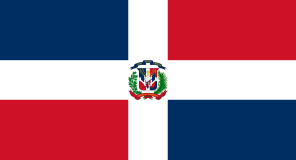Dominican Republic
Green Hydrogen Vision
The Dominican Republic (DR) envisions green hydrogen as a key driver in its transition to a sustainable and resilient energy future. By leveraging its abundant renewable energy resources, particularly solar and wind, the country aims to integrate green hydrogen into its energy system to decarbonize transportation, industry, and power generation. With a focus on fostering innovation, attracting investments, and enhancing energy security, the Dominican Republic aspires to become a regional leader in green hydrogen production and export, contributing to global efforts to combat climate change while stimulating economic growth.
National Strategy
The DR government is evaluating the overall economic viability of green hydrogen for the nation.
Capacity Targets
No known targets declared yet.
Impact Targets
No impact targets stated yet.
Policy Spotlight
The Dominican Republic’s renewable energy landscape is advancing rapidly. Legislative efforts, particularly through the Renewable Energy Incentives Law and Decree No. 65-23, have enabled renewable energy growth by providing financial and regulatory support. The National Energy Commission’s efforts to create a regulatory framework for energy storage will further support grid stability as renewable integration increases. Although specific green hydrogen regulations are not yet in place, the DR government is exploring green hydrogen as a sustainable energy source. The country’s focus on solar and wind power provides a strong foundation for potential hydrogen projects.
EN.IT, an Italian company, is eager to play a significant role in DR's developing green hydrogen sector through a renewable hydrogen project of 350 MW, utilizing wind and solar power in La Romana. EN.IT's involvement reflects the DR's dedication to diversifying its energy sources and decreasing reliance on fossil fuels. This project is forecasted to produce around 46,000 t/yr, primarily for export, according to EN.IT. The company anticipates making a final investment decision (FID) in 2026 and initiating commercial operations by late 2028.
Financing
The Dominican Republic’s operational framework includes comprehensive tax incentives under Law 57-07, PPAs facilitated by Decree No. 65-23, and financing support from local banks and the World Bank. These provisions make renewable projects more accessible to private and international investors, setting the groundwork for possible green hydrogen initiatives. Continued partnerships with global financial institutions could bridge funding gaps for large-scale renewable and hydrogen projects.
Government Green Hydrogen Lead
Antonio Almonte, Minister of Energy and Mines
